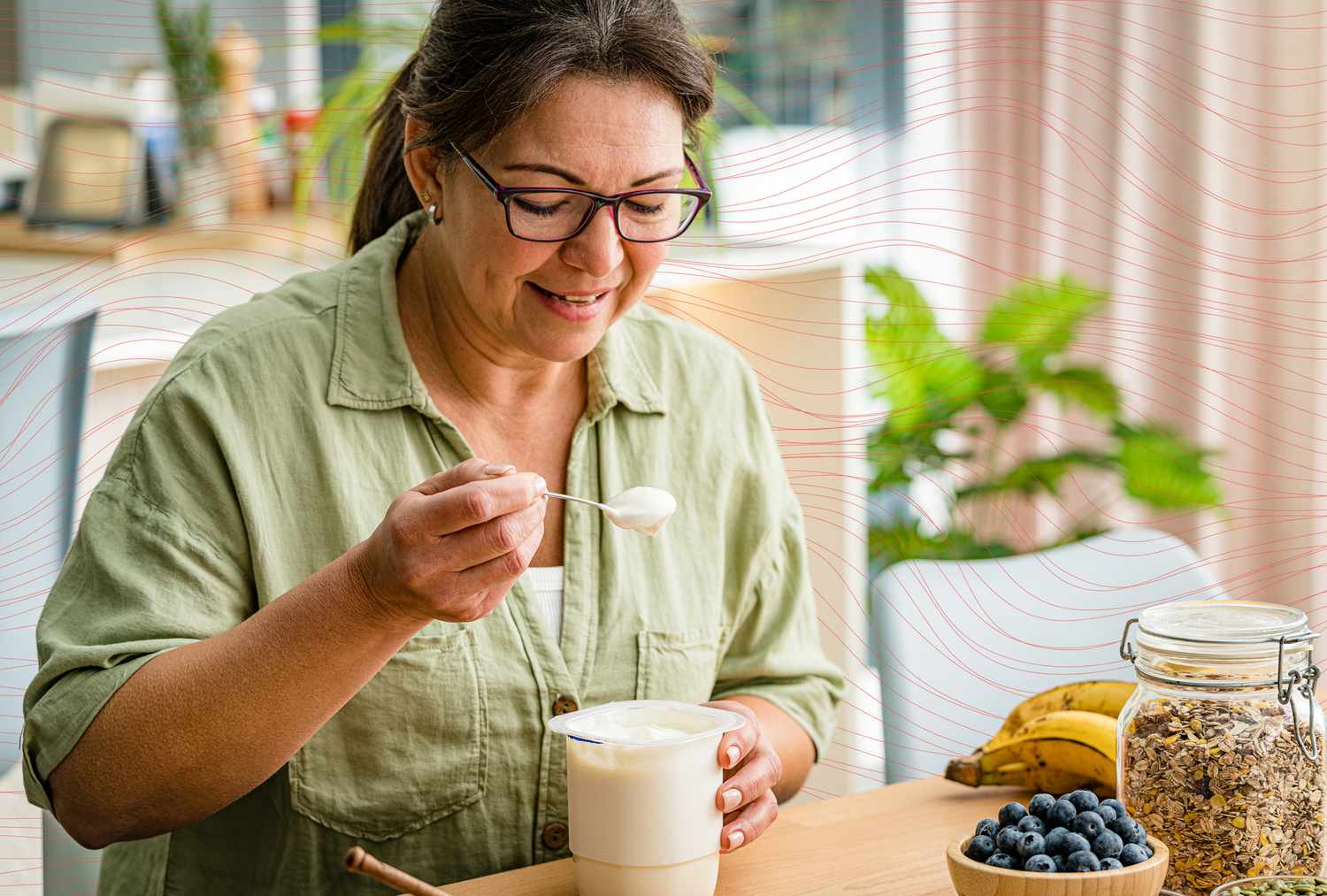- In 2021, about 57 million people globally were living with dementia.
- Researchers have identified a number of risk factors…
Blog
-

Which depression symptoms may predict dementia?
Share on Pinterest Midlife depression may predict dementia risk, a new study suggests. Image credit: Olga Pankova/Getty Images -
Karachi experiences foggy morning, ‘very unhealthy’ air, flight disruptions – Dawn
- Karachi experiences foggy morning, ‘very unhealthy’ air, flight disruptions Dawn
- Dense fog over Karachi reduces visibility, disrupts flight operations Geo News
- Flights rescheduled, cancelled amid foggy weather in Lahore Dunya News
- Dense fog…
Continue Reading
-
Federated two-edge graph attention network with weighted global aggregation for electricity consumption demand forecasting
Accurate electricity demand forecasting is crucial for the stable operation of smart grids, as it enables proactive resource allocation and prevents grid failures caused by demand–supply mismatches. However, achieving precise predictions requires modeling both temporal consumption patterns and peak variations in electricity usage data. Regional power consumption data may contain sensitive commercial information, while federated learning (FL) offers a privacy-preserving approach to address data scarcity. Nevertheless, existing FL approaches struggle with two critical limitations: (1) the inherent risk of overfitting when modeling peak demand variations with sparse client-side data, and (2) the loss of client-specific features during the aggregation process, which can result in over-smoothing of predictions for some clients due to parameter inconsistencies across local models. To overcome these challenges, this paper proposes a Federated Two-Edge Graph Attention Network with Weighted Global Aggregation (FapDGN) for electricity demand forecasting. The FapDGN framework initiates by constructing a hybrid feature representation that simultaneously encapsulates both temporal dynamics and numerical fluctuations in electricity consumption patterns. Recognizing that temporal characteristics are crucial for prediction accuracy while peak variations pose higher overfitting risks, the system employs two-edge graph structures to process these elements independently. Specifically, it utilizes temporal edges in graphs coupled with a multi-scale attention mechanism to capture consumption trends over time, while implementing dynamic covariance through numerical structure edges in graphs to represent peak variations as parameterized Gaussian distributions, an approach that mitigates overfitting. The model subsequently combines these extracted temporal and peak variation features to produce its final predictive outputs. Furthermore, to combat potential over-smoothing issues, FapDGN integrates a similarity-based adaptive dynamic fusion mechanism for parameter aggregation at the server level when building the global model. Experimental results show that FapDGN outperforms commonly used FL methods in forecasting electricity demand.
Continue Reading
-

Fifth Epic Games Store mystery free game predictions point in conflicting directions
The fourth Epic Games Store mystery free game for the holiday season 2025 is now live, but it will expire soon. Once it does, the storefront will reveal what the fifth game giveaway is, and while there are no apparent clues, some are…
Continue Reading
-
Enhancing large particle recovery in high-throughput functional cell sorting through ΔBOP optimization
Miwa, H., Dimatteo, R., de Rutte, J. & Ghosh, R. Di Carlo, D. Single-cell sorting based on secreted products for functionally defined cell therapies. Microsyst. Nanoeng. 8, 84. https://doi.org/10.1038/s41378-022-00422-x (2022).
Continue Reading
-
Proximal guided hybrid federated learning approach with parameter efficient adaptive intelligence for pneumonia diagnosis
Carter, M. J. et al. Evaluation of Acute and Convalescent Antibody Concentration Against Pneumococcal Capsular Polysaccharides for the Diagnosis of Pneumococcal Infection in Children with Community-Acquired Pneumonia. Pediatr. Infect. Dis. J. 43(2), E67–E70. https://doi.org/10.1097/INF.0000000000004185.
Duan, B. Advances in Pneumonia Detection: A Comprehensive Investigation of Federated Learning and Deep Learning-Based Approaches, in scitepress.org, pp. 714–718. (2024). https://doi.org/10.5220/0012969400004508
Khan, R. et al. Advanced federated ensemble internet of learning approach for cloud based medical healthcare monitoring system. Sci. Rep. 14(1), https://doi.org/10.1038/s41598-024-77196-x (2024).
Hassan, E., Saber, A., El-Kenawy, E. S. M., Bhatnagar, R. & Shams, M. Y. Early Detection of Black Fungus Using Deep Learning Models for Efficient Medical Diagnosis, in Proceedings of the International Conference on Emerging Techniques in Computational Intelligence, ICETCI 2024, 2024, pp. 426–431., 2024, pp. 426–431. (2024). https://doi.org/10.1109/ICETCI62771.2024.10704103
Hassan, E., Saber, A., El-Sappagh, S. & El-Rashidy, N. Optimized ensemble deep learning approach for accurate breast cancer diagnosis using transfer learning and grey wolf optimization, Evol. Syst., vol. 16, no. 2, pp. 1–17, Jun. (2025). https://doi.org/10.1007/s12530-025-09686-w
Khan, S. H. & Alam, M. G. R. A Federated Learning Approach to Pneumonia Detection, in 7th International Conference on Engineering and Emerging Technologies, ICEET 2021, (2021). https://doi.org/10.1109/ICEET53442.2021.9659591
Li, J. et al. Mar., A Federated Learning Based Privacy-Preserving Smart Healthcare System, IEEE Trans. Ind. Informatics, vol. 18, no. 3, pp. 2021–2031, (2022). https://doi.org/10.1109/TII.2021.3098010
Feki, I., Ammar, S., Kessentini, Y. & Muhammad, K. Federated learning for COVID-19 screening from chest X-ray images. Appl. Soft Comput. 106, 107330. https://doi.org/10.1016/j.asoc.2021.107330 (Jul. 2021).
Hu, E. et al. Jun., LoRA: Low-Rank Adaptation of Large Language Models, ICLR 2022–10th Int. Conf. Learn. Represent., Accessed: Jul. 08, 2025. [Online]. (2021). Available: https://arxiv.org/abs/2106.09685v2
Kaissis, G. A., Makowski, M. R., Rückert, D. & Braren, R. F. Secure, privacy-preserving and federated machine learning in medical imaging. Nat. Mach. Intell. 2 (6), 305–311. https://doi.org/10.1038/s42256-020-0186-1 (2020).
Kermany, D. S. et al. Identifying Medical Diagnoses and Treatable Diseases by Image-Based Deep Learning. Cell 172 (5), 1122–1131. https://doi.org/10.1016/j.cell.2018.02.010 (Feb. 2018). .e9.
Rajpurkar, P. et al. CheXNet: Radiologist-Level Pneumonia Detection on Chest X-Rays with Deep Learning,., Accessed: Jul. 17, 2025. [Online]. (2017). Available: https://stanfordmlgroup.github.io/projects/chexnet/
Irvin, J. et al. CheXpert: A large chest radiograph dataset with uncertainty labels and expert comparison, in 33rd AAAI Conference on Artificial Intelligence, AAAI 31st Innovative Applications of Artificial Intelligence Conference, IAAI 2019 and the 9th AAAI Symposium on Educational Advances in Artificial Intelligence, EAAI 2019, 2019, pp. 590–597. (2019). https://doi.org/10.1609/aaai.v33i01.3301590
Pardamean, B., Cenggoro, T. W., Rahutomo, R., Budiarto, A. & Karuppiah, E. K. Transfer Learning from Chest X-Ray Pre-trained Convolutional Neural Network for Learning Mammogram Data, in Procedia Computer Science, Jan. vol. 135, pp. 400–407. (2018). https://doi.org/10.1016/j.procs.2018.08.190
Brendan McMahan, H. et al. y Communication-efficient learning of deep networks from decentralized data, in Proceedings of the 20th International Conference on Artificial Intelligence and Statistics, AISTATS, Feb. 2017. Accessed: Jul. 08, 2025. [Online]. Available: https://arxiv.org/abs/1602.05629v4, Feb. 2017. Accessed: Jul. 08, 2025. [Online]. Available: https://arxiv.org/abs/1602.05629v4 (2017).
Asokan, M., Benjamin, J. G., Yaqub, M. & Nandakumar, K. A Federated Learning-Friendly Approach for Parameter-Efficient Fine-Tuning of SAM in 3D Segmentation, in Lecture Notes in Computer Science (including subseries Lecture Notes in Artificial Intelligence and Lecture Notes in Bioinformatics), Jul. 15274 LNCS, 226–235 https://doi.org/10.1007/978-3-031-77610-6_21 (2025).
C. Mathew and P. Asha, “FedProx: FedSplit Algorithm based Federated Learning for Statistical and System Heterogeneity in Medical Data Communication,” J. Internet Serv. Inf. Secur., vol. 14, no. 3, pp. 353–370, Aug. 2024, https://doi.org/10.58346/JISIS.2024.I3.021 .
Mabrouk, A., Díaz, R. P., Redondo, M., Abd Elaziz & Kayed, M. Ensemble federated learning: an approach for collaborative pneumonia diagnosis. Appl. Soft Comput. 144, 110500. https://doi.org/10.1016/j.asoc.2023.110500 (Sep. 2023).
Sun, Y., Li, Z., Li, Y. & Ding, B. IMPROVING LORA IN PRIVACY-PRESERVING FEDERATED LEARNING, in 12th International Conference on Learning Representations, ICLR, 2024., 2024. (2024).
Ulku, I., Tanriover, O. O. & Akagunduz, E. Low-Rank Adaptation of Vision Transformers for Remote Sensing With Near-Infrared Imagery. IEEE Geosci. Remote Sens. Lett. 21, https://doi.org/10.1109/LGRS.2024.3449372 (2024).
Dai, Y., Gao, Y. & Liu, F. Transmed: Transformers advance multi-modal medical image classification. Diagnostics 11(8), https://doi.org/10.3390/diagnostics11081384 (2021).
Lotfinia, M., Tayebiarasteh, A., Samiei, S., Joodaki, M. & Arasteh, S. T. Boosting multi-demographic federated learning for chest radiograph analysis using general-purpose self-supervised representations. Eur. J. Radiol. Artif. Intell. 100028. https://doi.org/10.1016/j.ejrai.2025.100028.
Slika, B., Dornaika, F., Merdji, H. & Hammoudi, K. Lung pneumonia severity scoring in chest X-ray images using transformers, Med. Biol. Eng. Comput., vol. 62, no. 8, pp. 2389–2407, Aug. (2024). https://doi.org/10.1007/s11517-024-03066-3
Liu, J. et al. Adaptive Parameter-Efficient Federated Fine-Tuning on Heterogeneous Devices, IEEE Trans. Mob. Comput., no. 01, pp. 1–18, Jul. (2024). https://doi.org/10.1109/TMC.2025.3586644
Wu, P. et al. FedFMSL: federated learning of foundation models with sparsely activated LoRA. IEEE Trans. Mob. Comput. 23 (12), 15167–15181. https://doi.org/10.1109/TMC.2024.3454634 (2024).
Cho, Y. J., Liu, L., Xu, Z., Fahrezi, A. & Joshi, G. Heterogeneous LoRA for Federated Fine-tuning of On-Device Foundation Models, in EMNLP –2024 Conference on Empirical Methods in Natural Language Processing, Proceedings of the Conference, Jan. 2024, pp. 12903–12913., Jan. 2024, pp. 12903–12913. (2024). https://doi.org/10.18653/v1/2024.emnlp-main.717
Continue Reading
-

A Planet Made of Lava and Steam? Webb Finds a Rocky World That Breaks the Rules
Astronomers studying an ultra-hot planet beyond our solar system have found something they did not expect: a thick atmosphere clinging to a world that should have lost it long ago.
Using NASA’s James Webb Space Telescope, researchers observed
Continue Reading
-

When to Eat Breakfast If You Have High Cholesterol
- Millions of adults are living with high cholesterol, increasing heart disease and stroke risk.
- Evidence suggests that eating breakfast may help lower the risk of heart disease.
- Try to eat breakfast within two hours of getting up.
We’ve all…
Continue Reading
-

GAMEDAY PREVIEW: PANTHERS HOST FLAMES
Sun 21 Dec 2025 – 06:00AM
🎟 CLICK HERE TO BUY TICKETS FOR PANTHERS HOME GAMES 🎟
It’s another sold-out Motorpoint Arena as Nottingham Panthers host Guildford Flames in the Elite League (16:00 face-off).
The game – which is sponsored…
Continue Reading
-

Galaxy Z Fold 8 tipped for major camera upgrades over predecessor
The Z Fold 7 made headlines with its surprising jump from a 50MP to a 200MP main camera. Naturally, many Samsung fans assumed that the Fold 8 wouldn’t offer further significant leaps in photography.
Upgrades to ultra-wide and telephoto…
Continue Reading